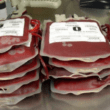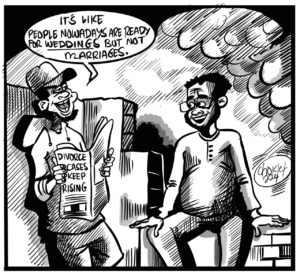THE Ministry of Health has announced that Zambia has recorded 66 new COVID-19 cases out of 346 tests done, with 146 recoveries in the last 24 hours.
And the Ministry has disclosed that it is currently employing plasmapheresis, a model similar to dialysis, to treat severely ill COVID-19 patients.
Speaking during the daily briefing, Monday, ministry permanent secretary Dr Kennedy Malama said that of the 66 cases, 41 were identified in Ndola through routine screening.
“In the last 24 hours, Zambia recorded 66 new cases of COVID-19 out of the 346 tests done. This is a far much bigger drop compared to yesterday. We continue reviewing the situation as a response team and early this morning, we looked at what is affecting the testing platform. We assure you, we will continue doing our best to ensure that we attain those targets of testing per day which we have set ourselves. This therefore brings the cumulative number of COVID-19 cases in our country to 11,148 cases. The 66 new cases in the last 24 hours include 60 cases identified through routine screening; in Ndola 41, Lusaka 17, Kitwe one and Serenje one. We had five contacts to known cases in Lusaka and one individual identified through hospital screening in Ndola. So once again it is clear that Copperbelt and Lusaka continue to be the top epicentres but the rest of the country also continues recording new cases this includes urban, peri-urban and the rural parts of our country,” he said.
“Currently, 61 patients are admitted to Levy Mwanawasa COVID-19 isolation and treatment facility. Out of these 61, 34 are on oxygen therapy and two are on ventilators under intensive care. Outside Lusaka, we have 38 patients who are admitted to our isolation facilities with 19 on oxygen therapy. No facility deaths were recorded in the last 24 hours. 146 patients have been discharged today bringing the cumulative number of recoveries to 10,208. One of the positives we have seen in our response as a country is a significantly improved recovery rate. Our recovery continues to be above 85 percent consistently and this is commendable to the response team across. Therefore, the cumulative number of COVID-19 cases in the country stands at 11,148 including 280 deaths and 10,208 recoveries.”
And Dr Malama said health officials were using blood plasma from those who had recovered to treat those who were not responding to the other treatment protocols.
“We have recently added another level of care where we are using plasmapheresis, a model which is similar to dialysis and treat our people. We are also using plasma from those who have recovered. Plasma is a blood component which we extract from those who have recovered and give it to those who have COVID-19. This new model has seen some good outcomes in our people and we are documenting this for replication to the rest of the country. These are some of the key treatment interventions which we have put in place as a country and as I have alluded to earlier, these are informed by the highest level of evidence to give assurance to the Zambians, when you visit our treatment centres, the outcomes are very impressive. Our people who came in very sick, some of them we were almost losing hope but with the treatment we have [put in place], we have saved far much more people than we have lost and it’s our conviction that if we continued on this trajectory, our mortality or loss of life in our health facilities will be very low,” said Dr Malama.
And speaking during the same briefing, director infectious diseases Professor Lloyd Mulenga said majority of patients in the isolation facilities were on oxygen therapy.
“Majority of the patients that we have in the facilities are those who are on oxygen therapy which is a good drug and very key drug, we have seen good outcomes with it and then also we have drugs which reduce the inflammation, the reaction of the body to the virus which is dangerous and that reaction, the inflammation if it’s not controlled can lead to various complications so we treat that reaction to the virus by giving dexamethasone. But also in certain people who do not respond, we go further ahead and give other anti-inflammatories…only in certain indicated individuals. Then also, one key thing we have learnt with COVID-19 is the ability of the blood to start forming clots and once we have these clots, they can seed anywhere in the body, they can seed in the brain and someone can present with a stroke; they can seed in the heart, they can present with a heart attack; in the kidney, they have renal failure. So everywhere, wherever there is blood, they can seed and form those clots. So we have heparin as a key drug to prevent those clots forming,” said Prof Mulenga.
“Then now, there are some individuals overtime whom we have seen have not responded well to those therapies and what we did employ is to try and remove their blood, the blood component, the plasma. When we remove the plasma, then we infuse another set of components, albumin and also we get blood from those that have recovered and they have enough antibodies and we infuse those antibodies into those antibodies in those that are severely sick and who have not responded to these other three strategies. And we have seen good response with that.”












